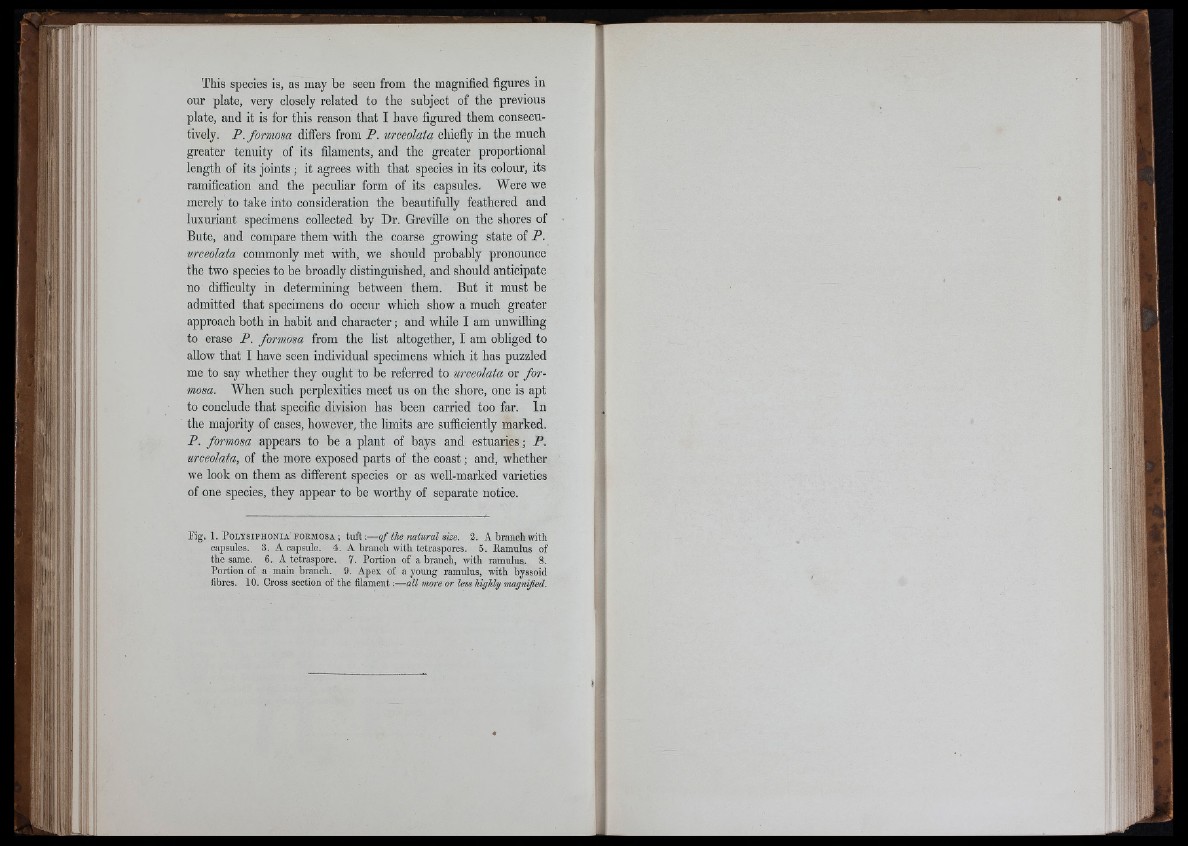
liti
This species is, as may be seen from the magnified figures in
our plate, very closely related to the subject of the previous
plate, and it is for this reason that I have figured them consecutively.
P. formosa differs from P. urceolata chiefiy in the much
greater tenuity of its filaments, and the greater proportional
length of its joints ; it agrees with that species in its colour, its
ramification and the peculiar form of its capsules. Were we
merely to take into consideration the beautifully feathered and
luxuriant specimens collected by Dr. Greville on the shores of
Bute, and compare them with the coarse growing state of P.
urceolata commonly met with, we should probably pronounce
the two species to be bi'oadly distinguished, and should anticipate
no difficulty in determining between them. But it must be
admitted that specimens do occur which show a much greater
approach both in habit and character; and while I am unwilling
to erase P. formosa from the list altogether, I am obliged to
allow that I have seen individual specimens which it has puzzled
me to say whether they ought to be referred to urceolata or fo rmosa.
When such perplexities meet us on the shore, one is apt
to conclude that specific division has been carried too far. In
the majority of cases, however, the limits are sufficiently marked.
P. formosa appears to be a plant of hays and estuaries; P.
urceolata, of the more exposed parts of the coast; and, whether
we look on them as different species or as well-marked varieties
of one species, they appear to be worthy of separate notice.
Fig. 1. POLYSIDHONIA FORMOSA; tu f t:—o f the m tu fa l size. 2. A branch with
capsules. 3. A capsule. 4. A branch with tetraspores. 5. Hamulus of
the same. 6. A tetraspore. 7. Portion of a branch, with ramulus. 8.
Portion of a main branch. 9. Apex of a young ramulus, with byssoid
fibres. 10. Cross section of the filament:—all more or I
' .•ij